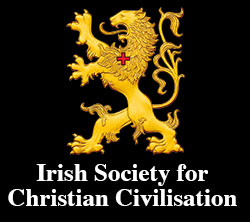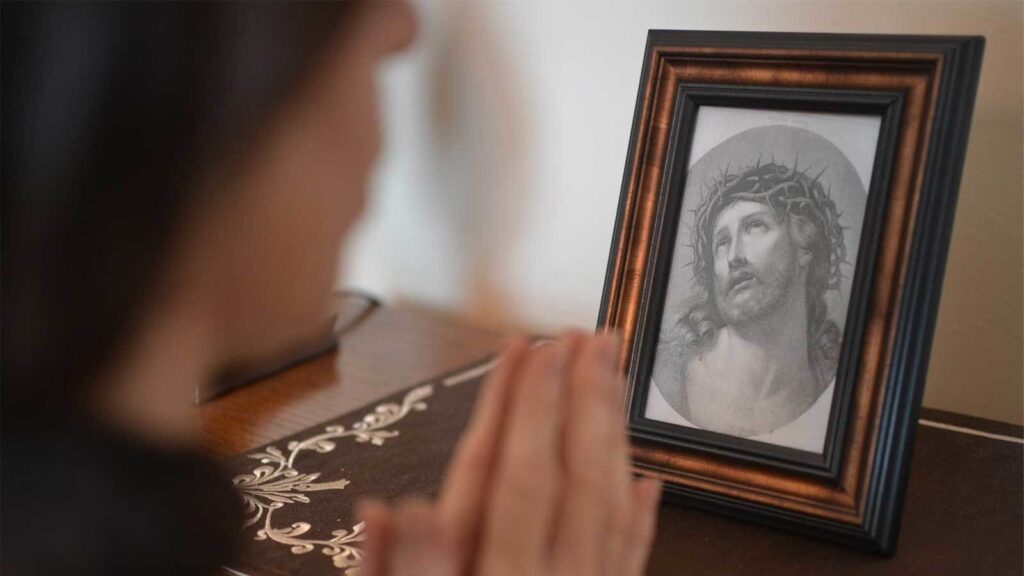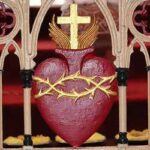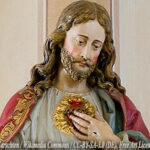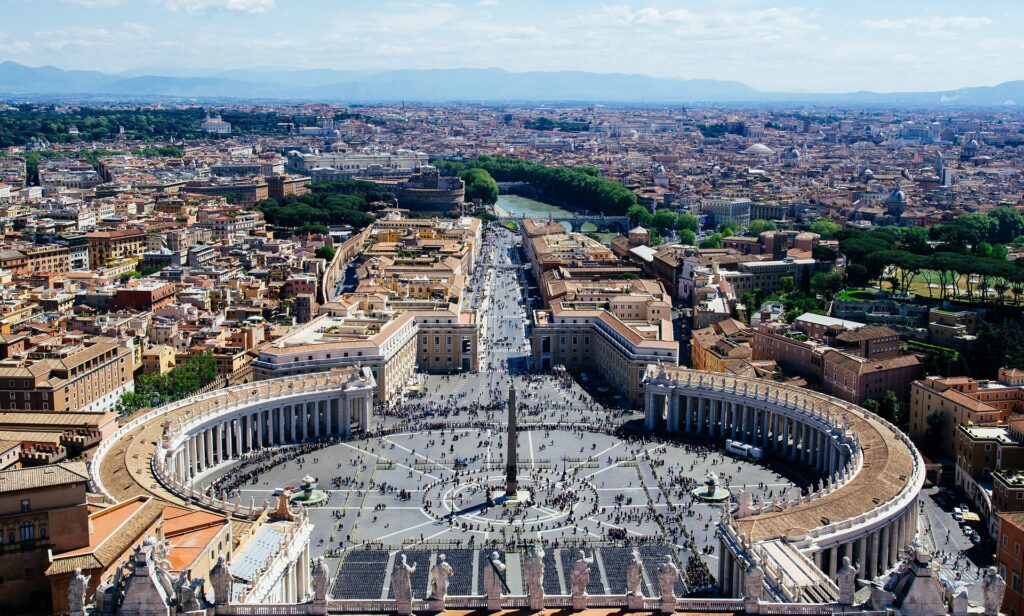
The upcoming synod in Ireland should be a cause of concern for Irish Catholics. A synod as such is not wrong. Synods – i.e. a gathering of bishops – in Ireland have happened in the past. For example, in 1101, the Synod of Cashel determined the boundaries of dioceses.
The upcoming synod seems to be based on a confusing speech made by Pope Francis on October 17th, 2015 at a ceremony commemorating the 50th anniversary of the institution of the synod of bishops. In this speech, Pope Francis proposed to implement the process of transforming the Catholic Church into a “Synodal Church.”
By carefully examining this speech, one sees that this “synodalisation” of the Church leads to abandoning the Church’s hierarchical and monarchical structure and adopting egalitarian attitudes in which effective power would reside in the “base”, i.e., in the ordinary faithful.[i]
“A Church Which Listens”
According to Francis, “A synodal Church is a Church which listens.” Thus, instead of Ecclesia docens (the teaching Church) we would have an Ecclesia audiens (a listening Church).
What would this “Church which listens” be like? Pope Francis says it would be a Church where everyone would listen to everyone:
“The faithful people, the college of bishops, the Bishop of Rome: all listening to each other, and all listening to the Holy Spirit, the “Spirit of truth” (Jn 14:17), in order to know what he “says to the Churches’” (Rev 2:7).[ii]
Thus, the “Church which listens” would be a Church directly guided by the Holy Spirit in the way claimed by Pentecostal Churches through a continuous manifestation of the Paraclete, who would point the way and teach doctrine directly to the whole “people of God.”
This idea was clearly stated by Bishop Fintan Gavin of Cork and Ross. “Hopefully after the next bishops’ conference, we will begin that process of conversation, engagement, and dialogue.”
Bishop Fintan Gavin even addressed the Association of Catholic Priests, an association not known for its orthodoxy, with these words. “We’re very conscious that we haven’t really begun because we haven’t really had the conversation with people like yourselves.”
For context, the ACP is the same organisation in 2015 that stated they would remain “neutral” regarding the marriage referendum. More recently, the ACP advocated for the churches to remain closed and stated that the Congregation for the Doctrine of the Faith’s note on same-sex blessings was “unwise”, “contradictory” and “negative. These are hardly the people to approach for an orthodox statement.
The “Synodal Church,” An Inverted Pyramid
This idea that everyone must listen to everyone because the Holy Spirit equally inspires all members of the Church constantly, is false. If the Spirit directly runs the Church and everyone ─ from the Pope down to the simple faithful ─ “hears” what He says and communicates in a permanent dialogue with everyone else the doctrines one must profess and the direction the Church should follow, the traditional notion of the Church as a perfect society structured in a hierarchical and monarchic way by divine institution, falls apart. She would become an egalitarian church, a society of equals.
Consistent with the democratic principle, if everyone is equal, power is found in the majority; it comes from the grassroots, from the people. And this appears to be the concept of Pope Francis, who does not hesitate to say that “in this [synodal] Church, as in an inverted pyramid, the top is located beneath the base,” recalling the condemned errors of Febronianism and of the Jansenist Synod of Pistoia.[iii]
Keep Connected to the “Base” and Start from the People
Speaking about the organisations of diocesan synods ─ which he claims are the “first level of the exercise of synodality” ─ Pope Francis goes on to show the creative power of the pyramid’s “base”:
“Only to the extent that these organisations keep connected to the ‘base’ and start from people and their daily problems, can a synodal Church begin to take shape…”
Bishop Paul Dempsey of Achonry echoed this idea. “We just don’t want it to end in a synod; it has to be something that continues in the life of the Irish Church. Please God, we will walk together, and we will struggle maybe together to see where we might go as an Irish Church at this time.”
“Listening” to the Holy Spirit, albeit egalitarian, would have three levels: first, listening to the people of God; then, listening to the bishops; and finally, to the Pope. This latter “listening” would be more intense since according to Francis’ speech the Pope is “the supreme witness to the fides totius Ecclesiae,” on whom it is incumbent “to speak as ‘pastor and teacher of all Christians.’”
A Confused, Upside Down “Synodal Church”
Despite the statement that the Pope “speak[s] as ‘pastor and teacher of all Christians’” it is not clear if this teaching function is received directly from Our Lord – which is the Catholic position – or emanates from the collective process of “listening.” If power in the inverted pyramid comes from the base, the latter hypothesis appears to be the one most likely.
The term “listening” to the Holy Spirit is also ambiguous because it suggests that the Paraclete continues to “speak” as in the times of the Apostles, meaning that the official Revelation is not completed and that dogmas continuously evolve. Both propositions are errors condemned by Saint Pius X as part of the Modernist heresy.[iv]
Synodal Church: “Significant Ecumenical Implications”
“The commitment to build a synodal Church,” says Francis, “has significant ecumenical implications.”
One of these implications is to consider the Pope merely as a primus inter pares, not unlike the schismatic Eastern patriarchs. Thus, Francis says that in the “synodal Church” the Pope is “one of the baptised” who, “within the College of Bishops [is] as a Bishop among Bishops” with a mission “to lead the Church of Rome.”
For this reason, Francis emphasises, “a conversion of the papacy” is needed; he quotes his predecessor John Paul II who stated that a new way of exercising the Primacy had to be found, one “open to a new situation.”
How to reconcile the desired changes in Church structure with the traditional teaching of the Popes? In the Decree Lamentabili Sane Exitu, Saint Pius X condemned the Modernist error which claimed that “The organic constitution of the Church is not immutable; but Christian society, just as human society, is subject to perpetual evolution.”[v]
The Catholic teaching is that the Church is monarchic by divine institution, and the Pope has the full power to teach, guide and sanctify as it is stated, for example, in the Profession of Faith that the Second Council of Lyons (1274) imposed on Michael Palaeologus:
“Also this same holy Roman Church holds the highest and complete primacy and spiritual power over the universal Catholic Church which she truly and humbly recognises herself to have received with fullness of power from the Lord Himself in Blessed Peter, the chief or head of the Apostles whose successor is the Roman Pontiff.”[vi]
If the synod in Ireland is to be successful it must have as its foundation the truth and orthodoxy. The Synod must recognise the monarchical structure of the Church is divinely instituted by Our Lord Jesus Christ and it must reject the “upside down pyramid”.
Let us pray to Mary Most Holy, to assist us in these times of confusion.
[i] On the monarchic character of the Church, see St. Pius X, Letter Ex quo, Denzinger, No. 2147a; Charles Journet, The Church of the Word Incarnate (Sheed & Ward, 1955), p. 422-423; Billot, Tractatus de Ecclesia Christi (1927), v. 1, p. 524 ff. [ii] “Address of His Holiness Pope Francis,” Ceremony Commemorating the 50th Anniversary of the Institution of the Synod of Bishops, Paul VI Audience Hall on Saturday, October 17, 2015. Retrieved 12/8/2015 and available at http://w2.vatican.va/content/francesco/en/speeches/2015/october/documents/papa-francesco_20151017_50-anniversario-sinodo.html [iii] Cf. Denzinger, Nos. 1500-1512.
[iv] Saint Pius X, Decree Lamentabili Sane Exitu, on July 3, 1907, no. 21, (cf. Denzinger, No. 2021); and also Saint Pius X, Motu Proprio Sacrorum Antistitum, “Oath against Errors of Modernism”, on September 1, 1910, as seen in Denzinger, No. 2145. [v] Denzinger, No. 2053
[vi] Denzinger, No. 466.
Subscribe to our newsletter!
This year, it is more crucial than ever that we turn to prayer and intercession to increase devotion to Our Lady across our country. That’s why you’re invited to join us in the Three Hail Marys Pledge, a powerful devotion that can bring personal spiritual benefits and national transformation. By reciting three Hail Marys daily, you honour the Immaculate Heart of Mary and seek her intercession for the conversion of sinners, the salvation of souls and the restoration of Ireland’s Catholic Faith. This ancient devotion, revealed to Saint Mechtilde, promises spiritual benefits including protection from mortal sin and the assurance of a good death. Your daily prayers will contribute to an increase in devotion to Our Lady, the conversion of sinners and the moral renewal of our country. Let us commit to this powerful devotion and seek the guidance and protection of Our Lady.


